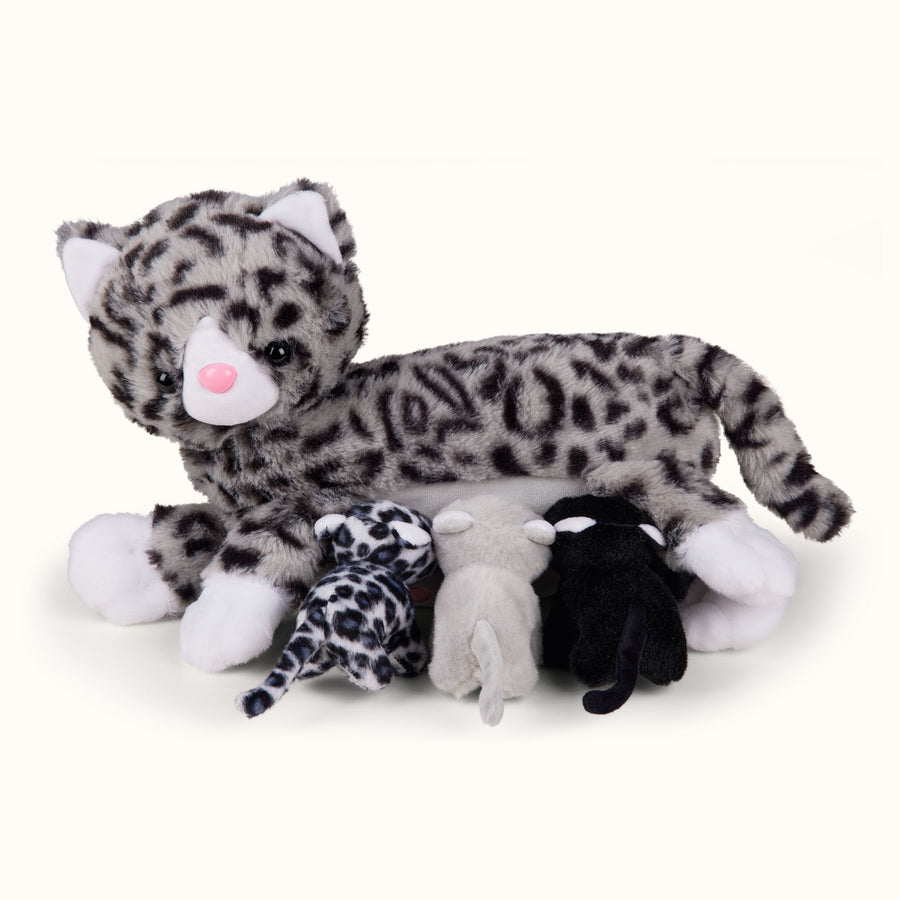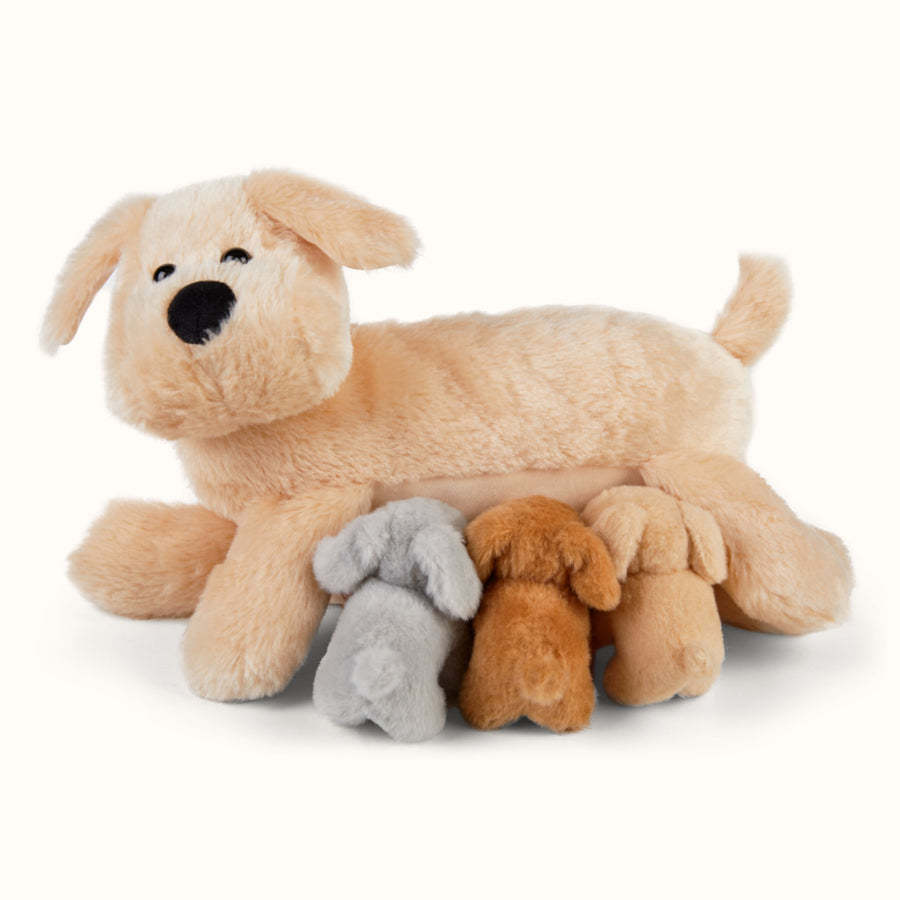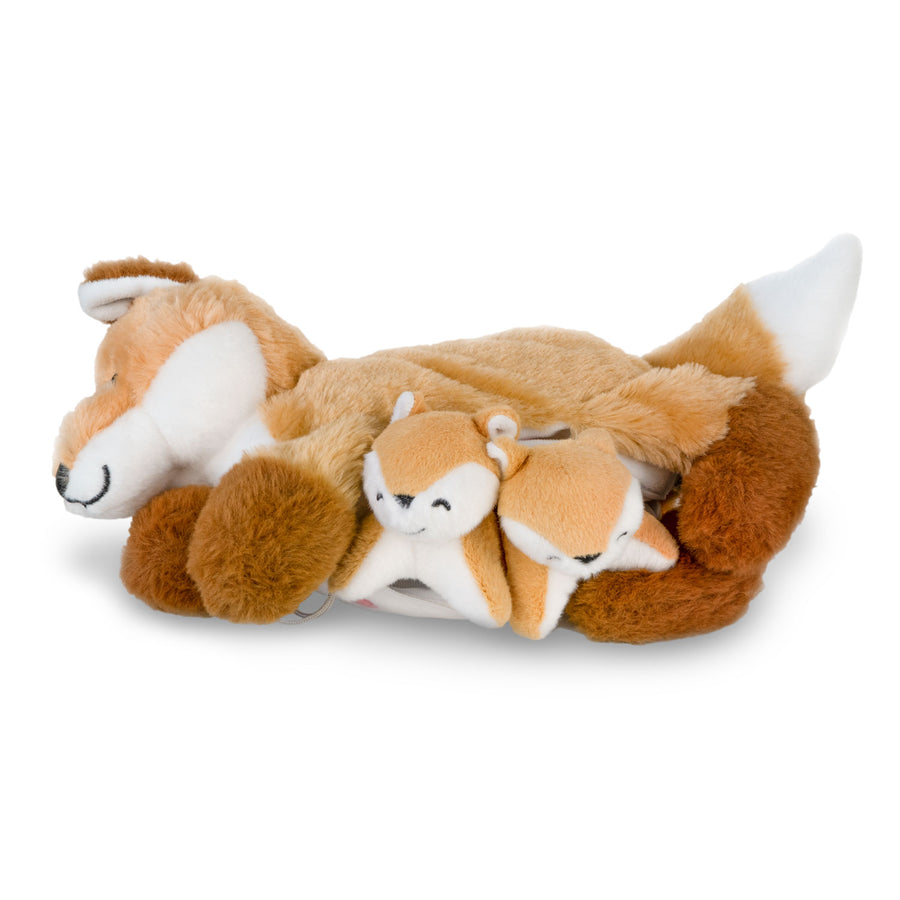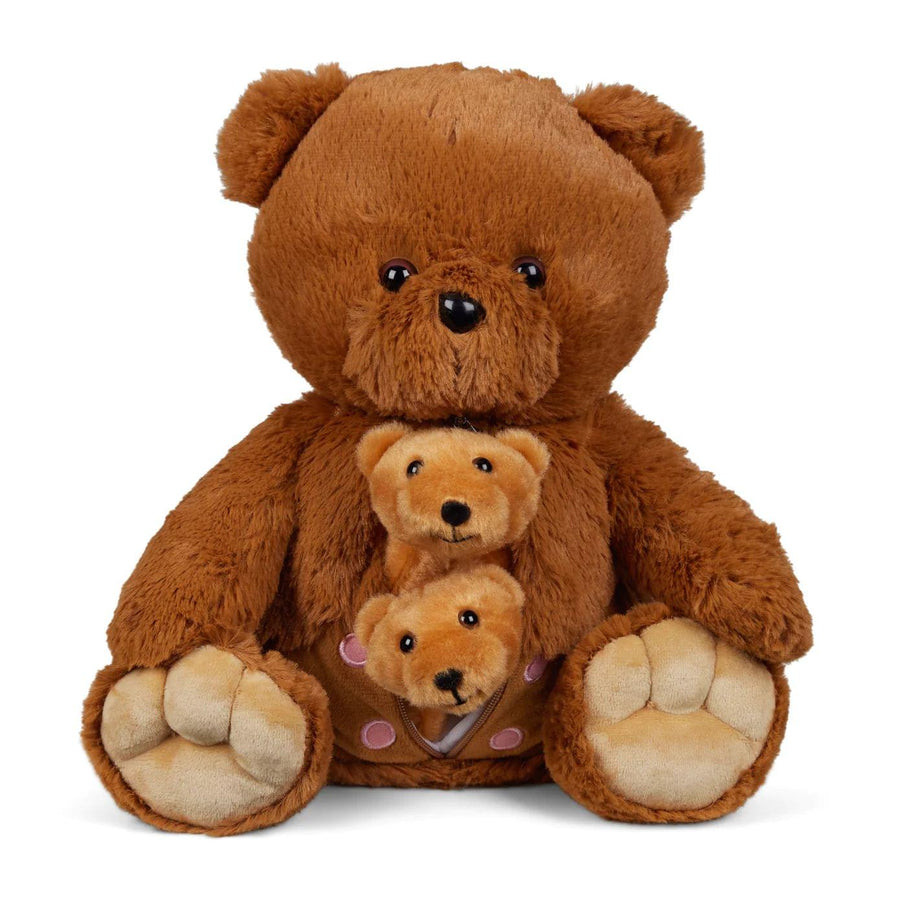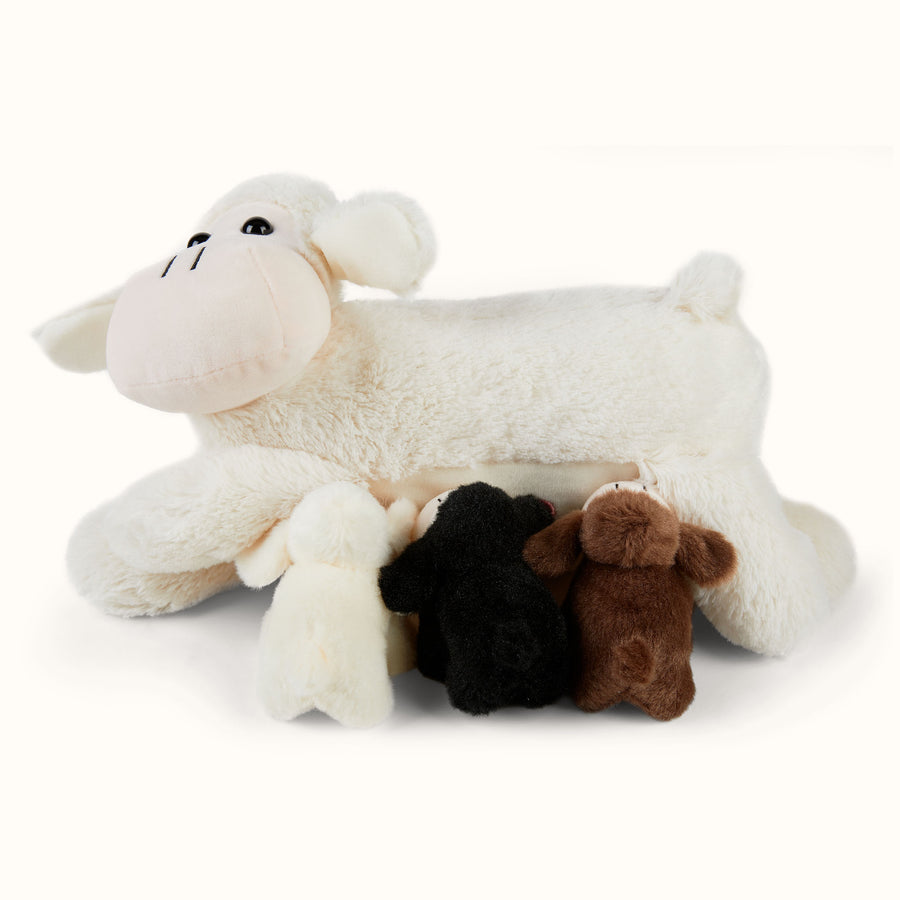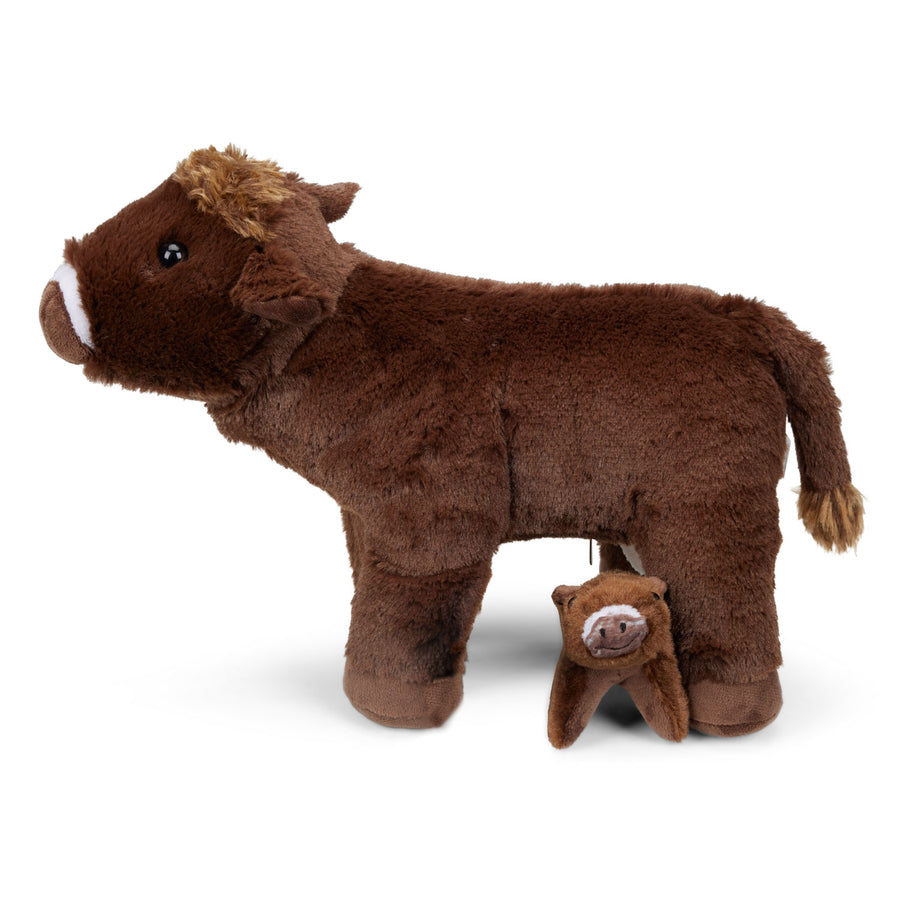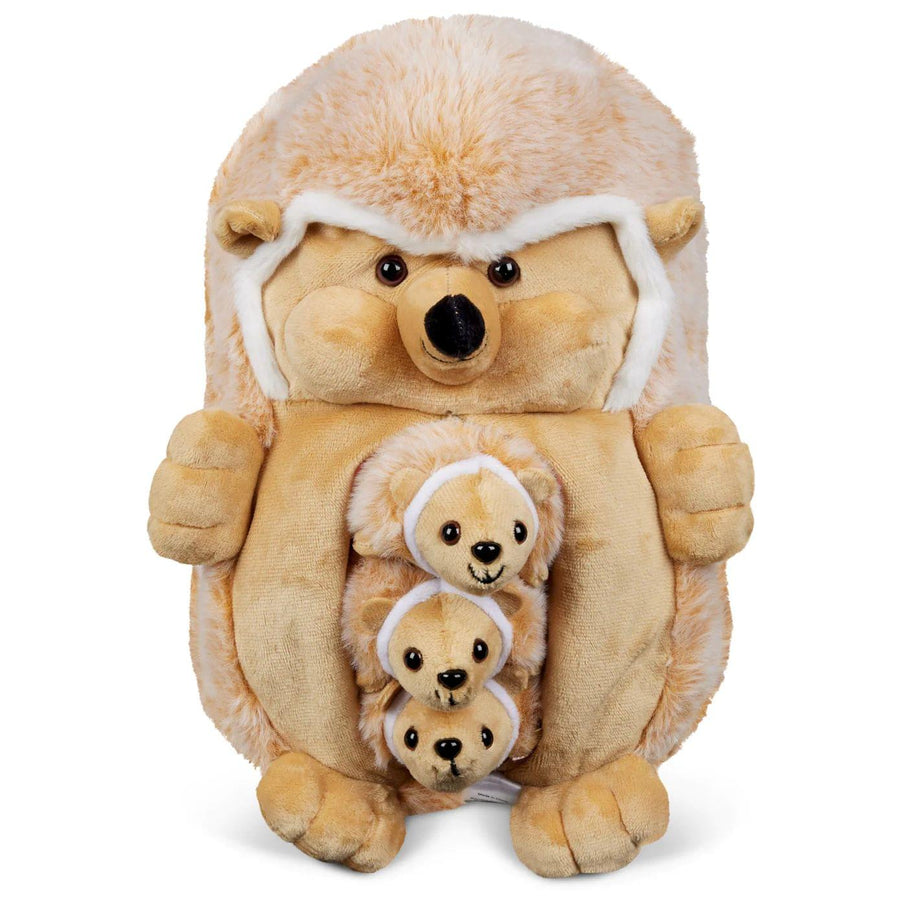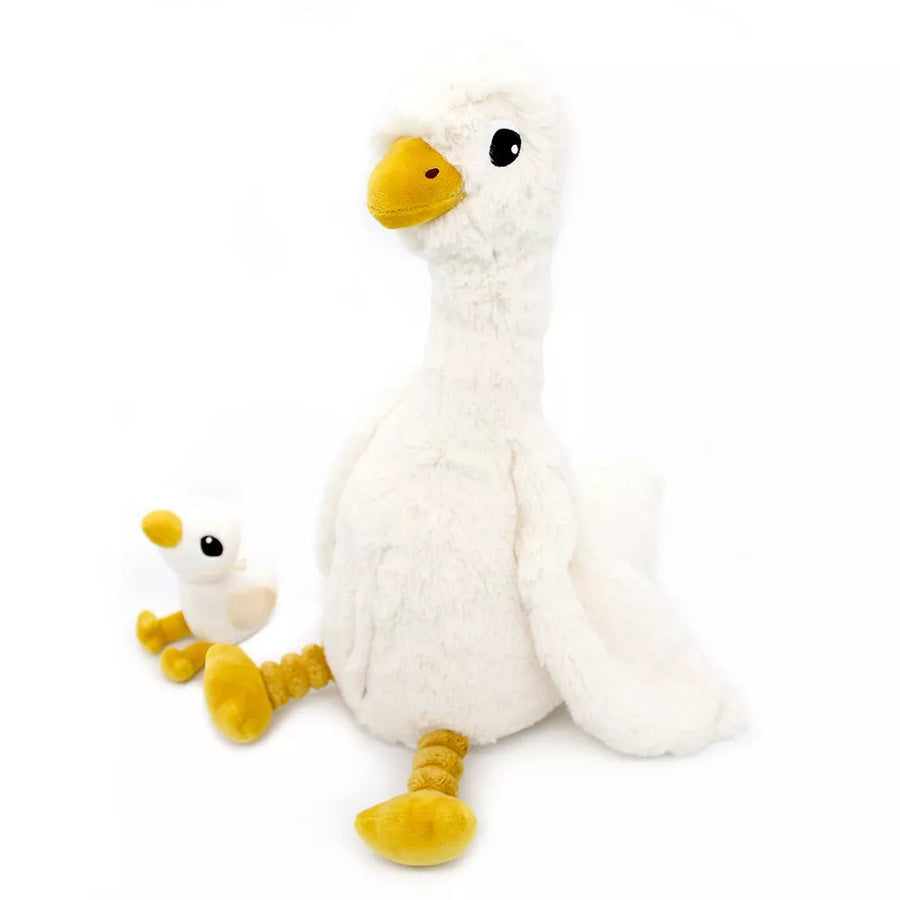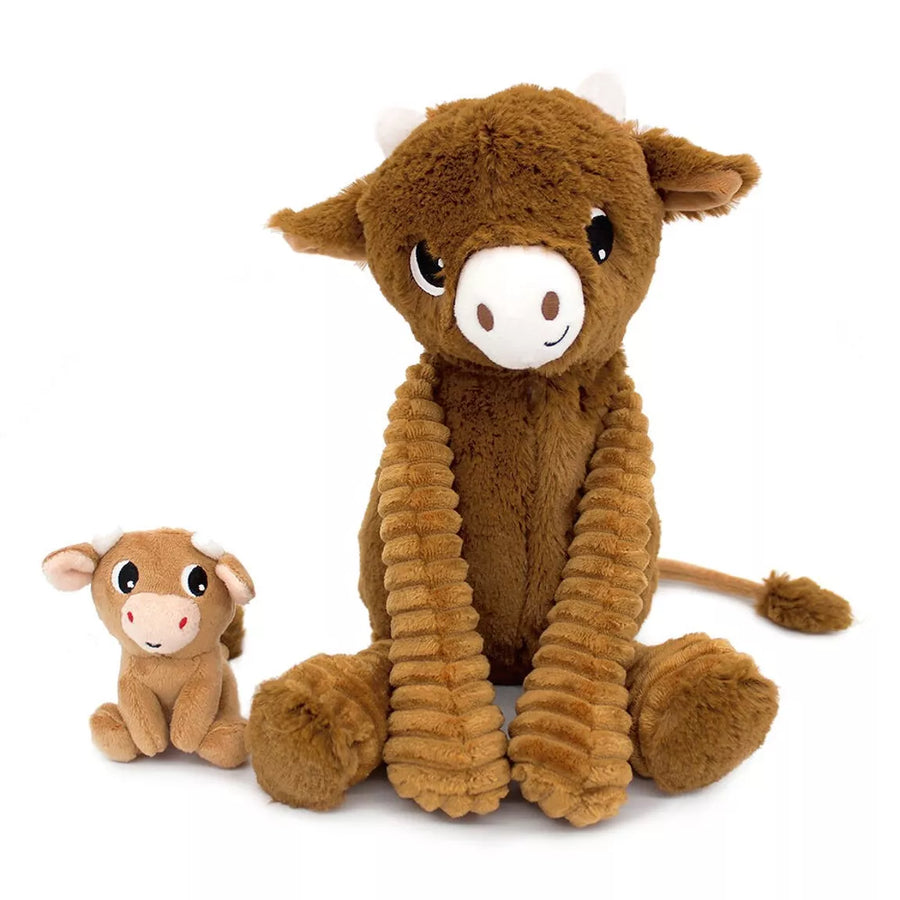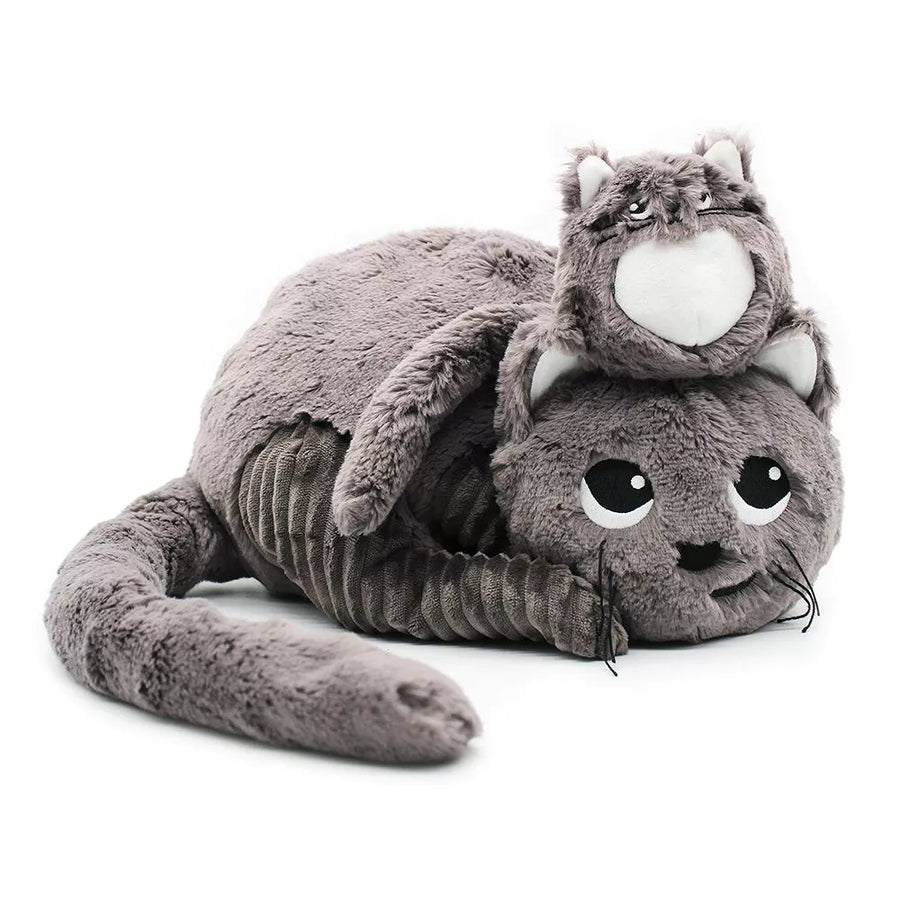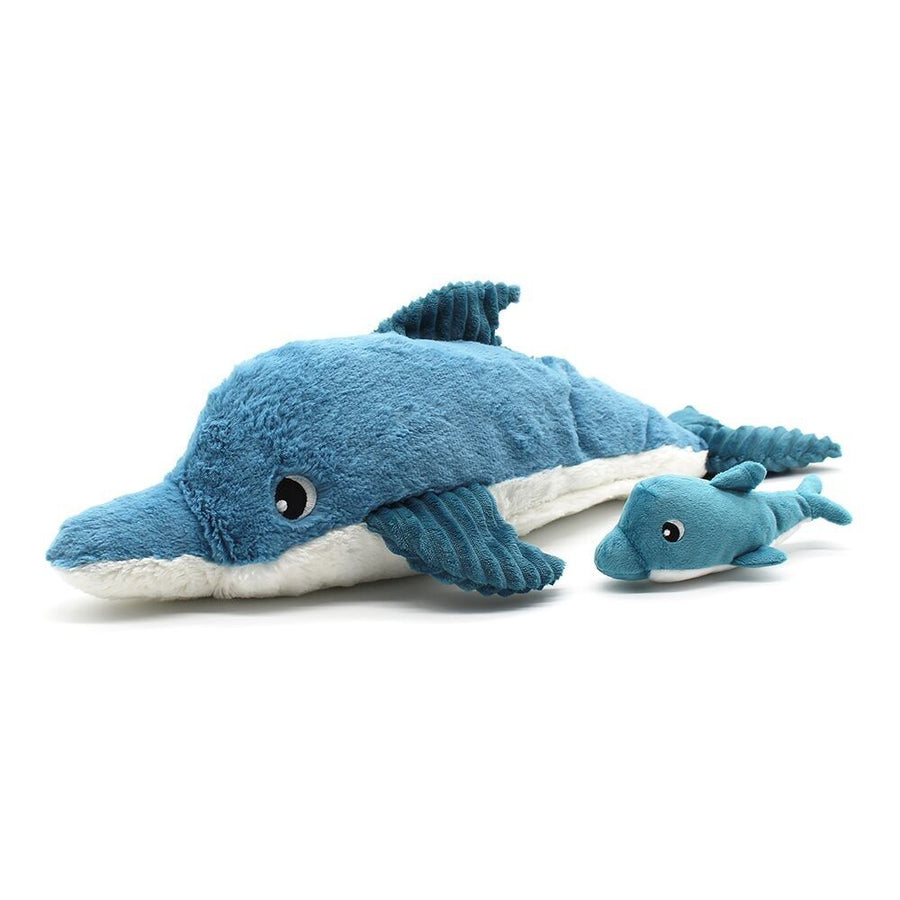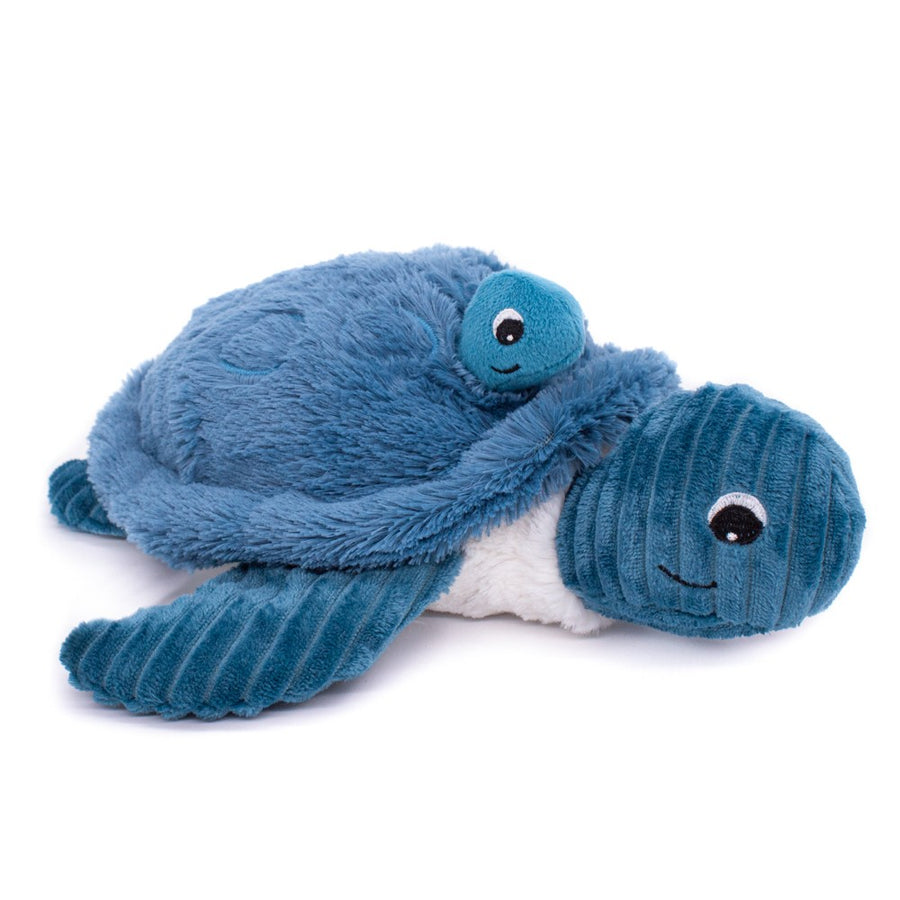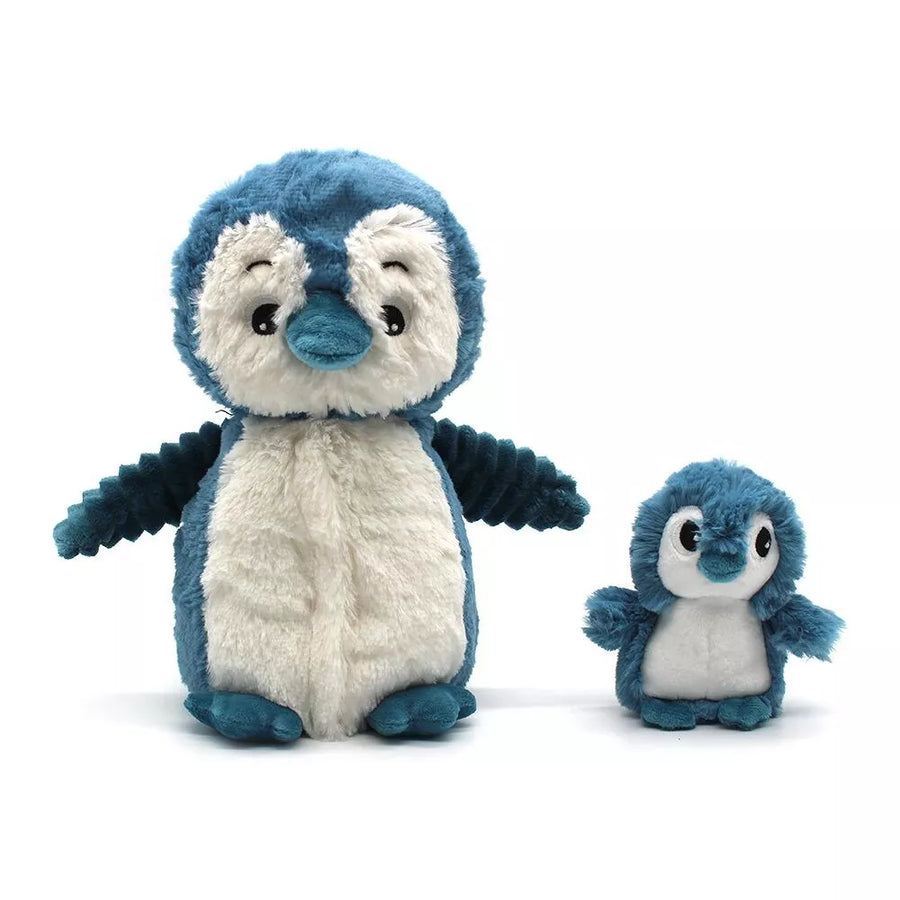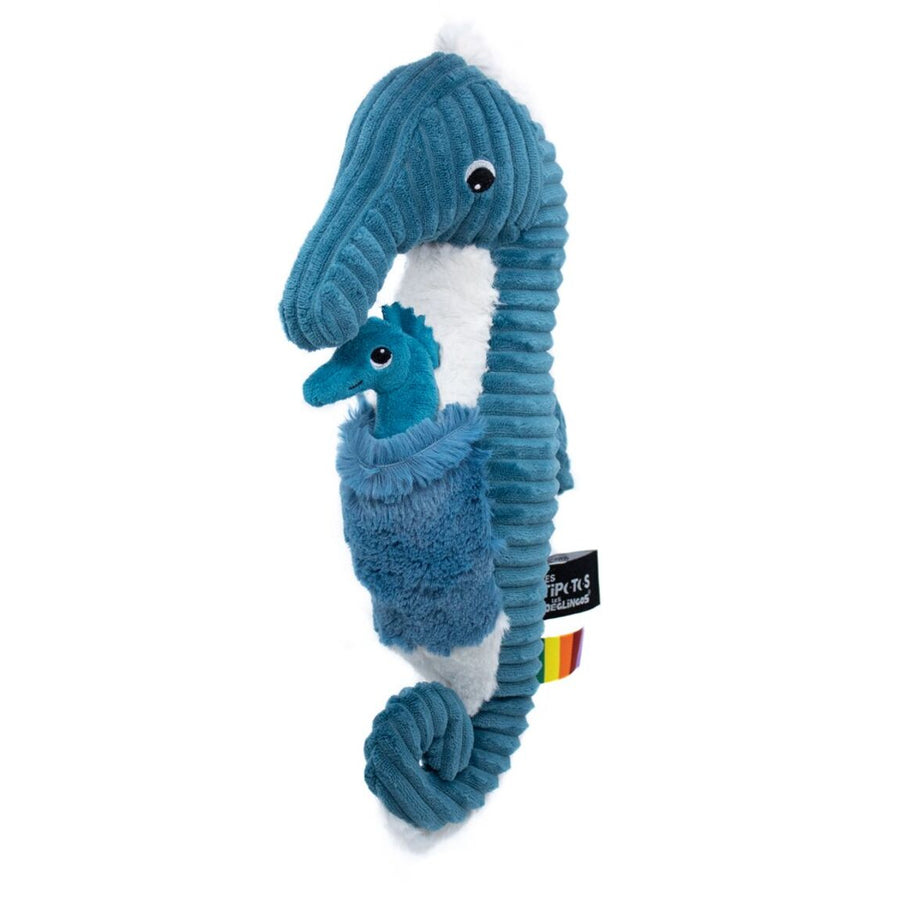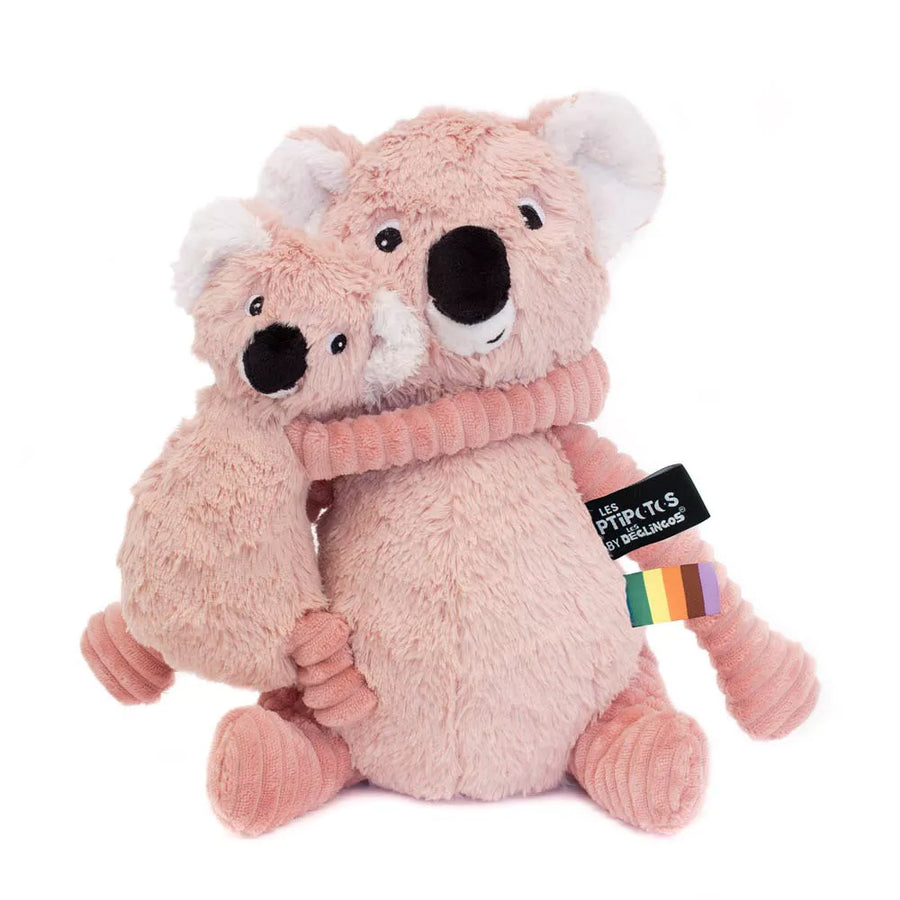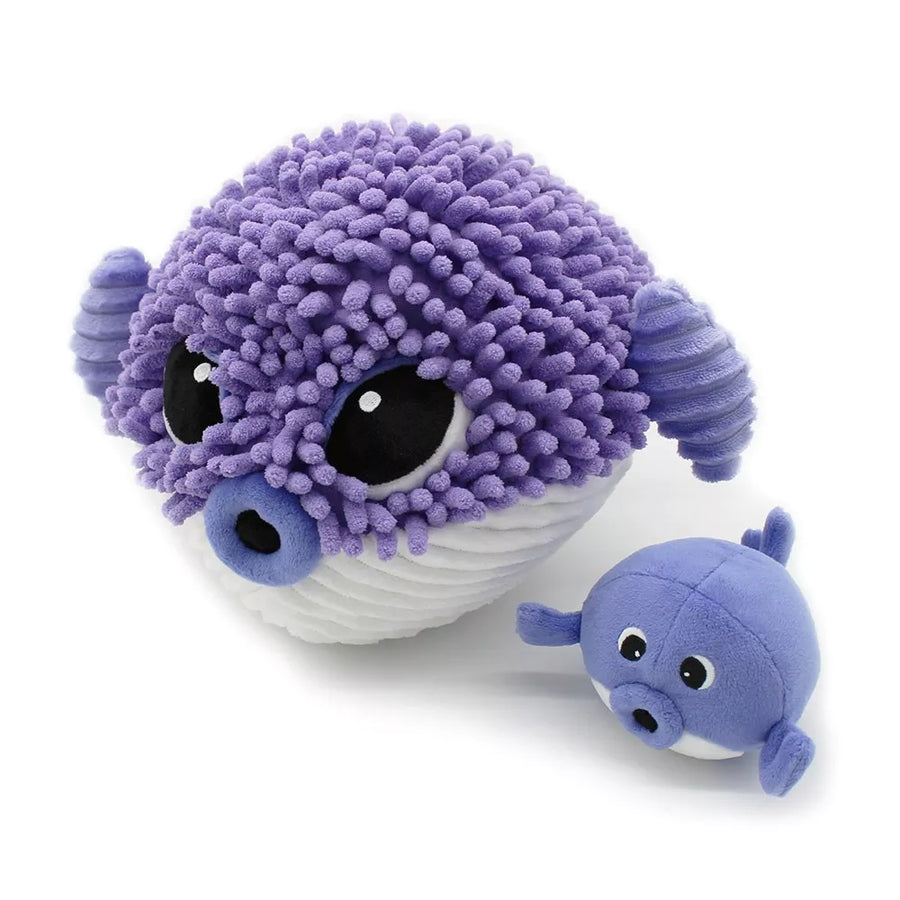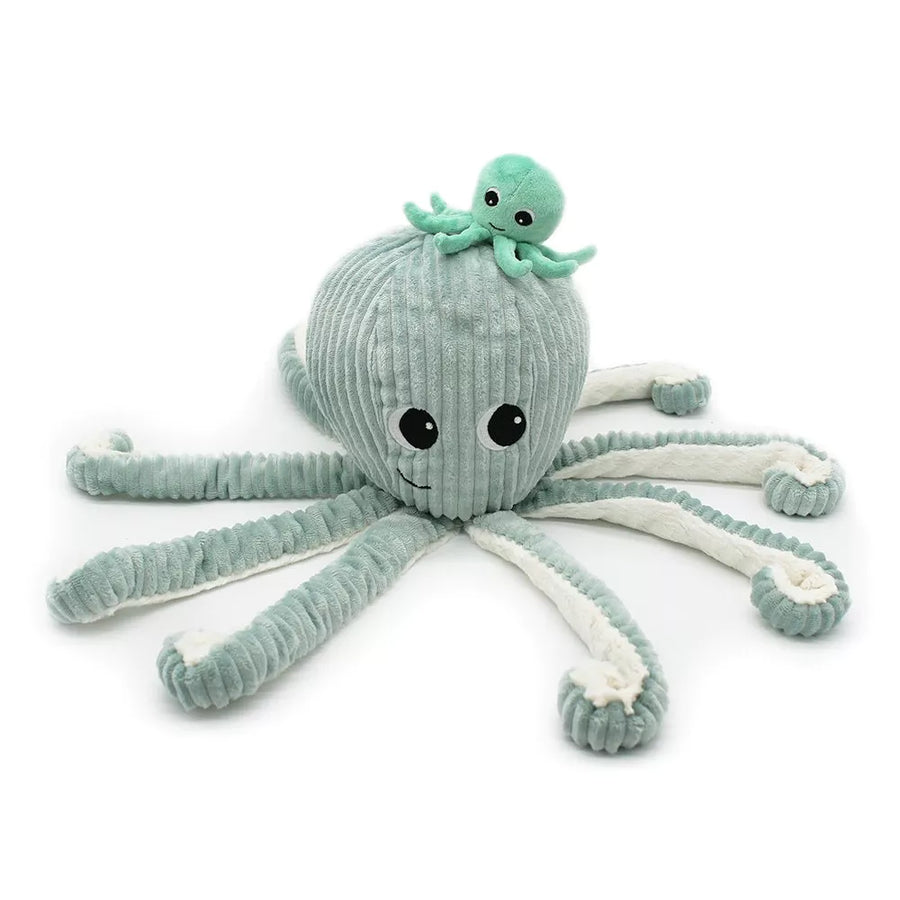An overview of cuddly toys, plush toys and stuffed animals
Questions & Answers about cuddly toys and stuffed animals
In everyday language, the terms cuddly toy, plush toy, and stuffed animal are largely used synonymously. "Plush toy" emphasizes the soft, fluffy outer material, while "stuffed animal" neutrally describes any animal character made of textiles. "Cuddly toys" are generally perceived as figures specifically designed for cuddling, comforting, and companionship.
Many cuddly toys are approved for use from birth and are therefore generally suitable for babies, provided they meet the relevant toy safety standards and do not contain any small parts that could be swallowed. For babies in their first year, compact, soft stuffed animals without hard or sharp edges that are easy for little hands to hold are particularly suitable. The stated age recommendation and the safety rating of the respective product are always the determining factors.
For safe baby sleep, many experts recommend a clear sleeping environment without pillows, blankets, or cuddly toys during the first year. This reduces the risk of the mouth or nose being unintentionally covered and breathing restricted. Later, when children can reliably roll over, move their heads freely, and free themselves from awkward positions, a small, lightweight cuddly toy can be introduced as a sleep companion – in accordance with the individual development and the recommendations of pediatricians or midwives.
A safe cuddly toy meets applicable toy safety standards and is manufactured to remain reliable even with intensive everyday use. Important indicators are provided by markings and visible workmanship.
- CE marking as an indication of compliance with the basic EU safety requirements.
- Testing according to EN 71-1/-2/-3 (mechanical and physical properties, flammability and selected chemical requirements).
- Firmly sewn seams, no easily detachable buttons, eyes or small parts.
- Stable yet soft filling without protruding elements or metal parts.
- Clear and comprehensible age recommendation on the label or packaging.
For cuddly toys and plush animals in Europe, the CE marking and the toy safety standards EN 71 are particularly relevant. The CE marking indicates that the product meets the EU's basic safety requirements. The EN 71-1/-2/-3 standards relate to mechanical and physical properties, flammability, and certain chemical requirements. Depending on the manufacturer, additional test marks or certificates may also be indicated.
The care of cuddly toys depends on the manufacturer's instructions for each material. Many plush toys are suitable for machine washing, while others should be hand-washed. Gentle treatment helps to preserve their shape, feel, and colors in the long term.
- Care instructions on the label or packaging are always authoritative.
- Gentle washing programs and mild detergents are recommended for most plush toys.
- Smaller stains can often be removed with a damp cloth and a little mild soap.
- Stuffed animals should be completely dry after cleaning before being used again.
The ideal size of a cuddly toy depends on the child's age, its intended use, and personal preferences. For babies and very young children, compact plush toys that are easy to grasp and don't cover much of the face are more suitable. Older children often deliberately choose larger plush toys that play a more prominent role during play or as bedtime companions.
Many children use cuddly toys as familiar companions in everyday situations and during transitional phases. Stuffed animals can provide a sense of security when their environment or routines change, and can be used in role-playing games to reenact experiences. They do not replace caregivers, but as constant, familiar objects, they can help children understand their feelings and support rituals related to sleep, comfort, and closeness.
As a gift for a birth or christening, soft, rather compact cuddly toys with clearly stated suitability from birth and certified safety standards are particularly suitable. Subtle colors and timeless designs often fit well with a baby's layette. A plush toy family with a mother and baby can also be chosen, reflecting the theme of closeness and security in everyday family life. Ultimately, the age recommendation, the quality of workmanship, and the family's personal preferences are always the deciding factors.
